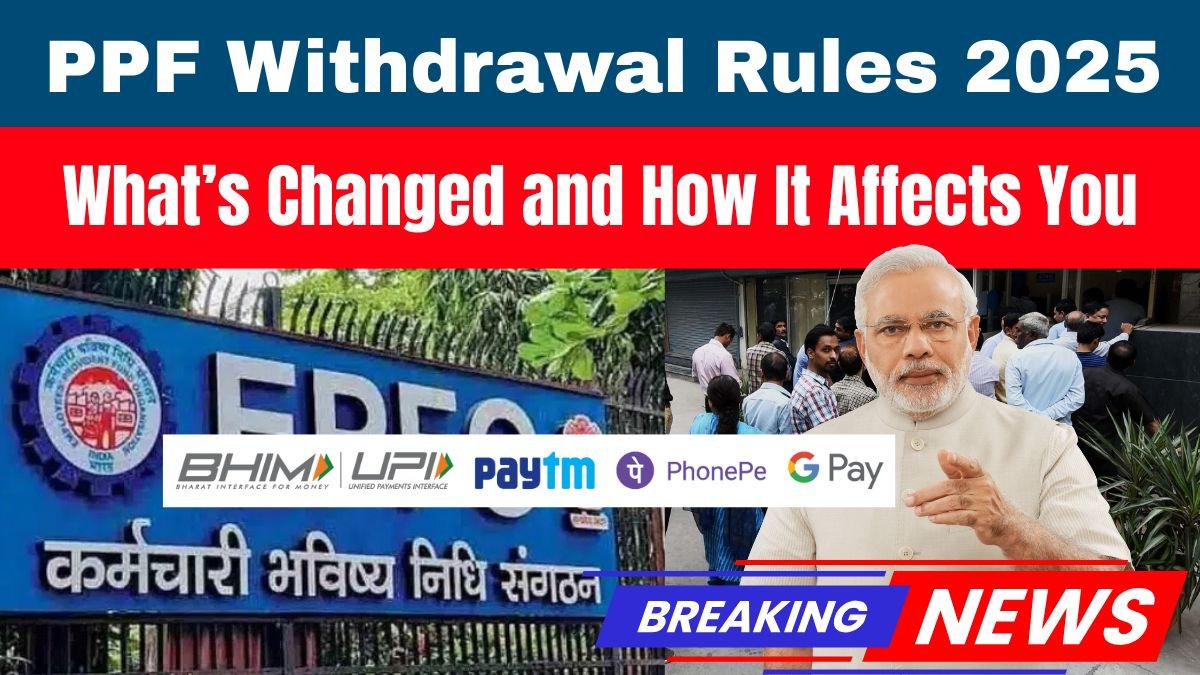For years, the Public Provident Fund (PPF) has been a dependable choice for an investor seeking safe and tax-free growth in India. With interest rates guaranteed at 7.1% for FY 2025-26, PPF vehicles provide stable long-term returns. Although the 15-year lock-in period lends a certain discipline to one’s savings, this period equally raises liquidity concerns when such needs arise unexpectedly—be it medical emergencies, children’s education, or simply urgent needs. Hence, it’s very important to know about the rules for 2025 so you can get funds on time and secure long-term gains.
The 15-Year Lock-In: The Backbone of Long-Term Discipline
PPF accounts mature after 15 fiscal years from the date of opening. For instance, if the account was set up in April 2010, it would close in March 2026. Upon maturity, the entire corpus, that is, the deposit amount plus accumulated interest, can be withdrawn with tax exemption. Although it seems to be a long lock-in, it would certainly guard against spontaneous withdrawals, thus letting one fully enjoy the power of compounding.
Partial Withdrawals: Limited Relief After 5 Years
Partial withdrawal is allowed after five financial years for emergencies. The permissible withdrawal amount is capped at fifty percent of the balance on the last day of the previous financial year or the balance at the end of four preceding financial years. Only one such withdrawal is allowed in one financial year; so use it wisely for emergencies, like school fees or medical treatment. Remember that this amount will not earn any further interest, which will reduce the overall corpus at maturity.
Premature Closure: Only in Special Circumstances
A PPF account can only be closed prematurely after five financial years under some special circumstances related to a life-threatening illness (of the account holder or family member), higher education expenses, or the account holder becoming an NRI. For any premature closure, a penalty of 1% lower interest rate is generally applied on the entire account (or extension period); this lowers the total returns. Hence, it is better to pursue this route only as the last resort, submitting the specified application form along with necessary documents, such as a medical certificate or proof of education expenses.
Withdrawal at Maturity: Full Tax-Free Access
After 15 years, you can withdraw the entire corpus at will; it is 100% tax-free. Many investors use this corpus for retirement-related expenses, property investments, etc. After maturity, two options will be available:
- No Extension: Close the account and withdraw the entire amount, without tax or restriction.
- Extension in 5-year blocks:
- With Contributions: Contributions can be made. One withdrawal per year allowed, subject to regulatory conditions.
- Without Contributions: No further contributions can be made. In the entire 5-year block, phased withdrawals up to 60% of the opening balance can be made; one withdrawal per year is permitted. Flexible and tax-free interest would continue to accrue on the remaining amount.
Tax Benefits: PPF’s Biggest Strength
An investment of up to ₹1.5 lakh annually in PPF is eligible for deduction under Section 80C. Also, both interest earned and maturity proceeds are completely tax-free. The “EEE” benefit (Exempt-Exempt-Exempt) renders PPF very attractive to risk-averse investors. In all cases—whether partial withdrawal, premature closure, or at maturity—TDS/tax is never levied on the amount that the account holder receives.
Planned Liquidity: Some Practical Tips
- Set up an amount goal-wise so that you make partial withdrawals just as little as possible to keep compounding intact.
- If you are around 15 years old with a near-future need for funds, opt for an extension without deposit, which in turn gives phased withdrawal over 5 years.
- Compare options (like low-interest loans) before going for premature closure; a 1% reduction of interest can matter in the long run.
Quick Reference: PPF Withdrawal Rules 2025
| Withdrawal Types | Eligibility | Timelines | Limits |
|---|---|---|---|
| Partial withdrawal | After completion of the 5th FY | 50% of the lower of the previous FY-end or four years prior FY-end balance once per FY | Tax-free |
| Premature closure | Completed 5th FY; specific reasons | Entire balance recalculated with a ~1% reduction in interest | Penalty applies |
| Upon maturity | End of 15th FY | 100% tax-free | No restrictions |
| Extension (without deposit) | 5-year block | Max 60% of opening balance across the entire block, one withdrawal per FY | Interest continues on remaining balance |
Disclaimer:
This article is for educational purposes only and provides general information based on the current PPF guidelines as of 2025. Please consult your bank/post office or registered financial advisor before making any personal decisions.








